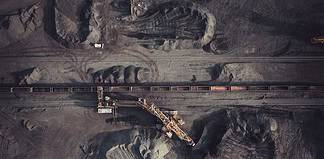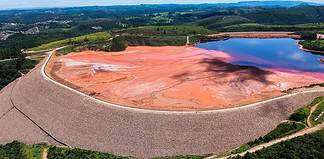ANGLOGOLD Ashanti’s assets have performed well in 2019, with overall production ncreasing by 7pc in the first quarter from 801,000oz from 752,000oz – despite a drop in production at Sunrise Dam in WA.
At Sunrise Dam, production was 11pc lower at 136,000oz for the first six months ended une 30, 2019, compared to 153,000oz during the same period last year.
The drop in production was due to a lower mill feed grade and lower metallurgical recovery from the ore mined.
The drop at Sunrise Dam, plus lower grades and plant throughput from the company’s Siguiri asset and a planned production decrease at the Cerro Vanguardia site, was partially offset by strong improvements from Kibali, Iduapriem, Geita and Tropicana.
Chief executive officer Kelvin Dushnisky said that the company was expecting an especially strong fourth quarter with the gold price averaging around $1414/oz as of August 4, 2019.
“While we’ve seen a rally in the gold price, this will not diminish our focus on improving free cash flow and returns through active portfolio management and strict capital discipline,” Mr Dushnisky said.
“Tight cost management will continue to be a key driver for us.”The company transitioned from a particularly high grade, coarse-gold zone within Midway Shear that had a high metallurgical recovery in 2018, to ore development from the Vogue ore body at the start of 2019.
The Vogue ore body is expected to increase feed grade and recovery rates to REP feasibility study levels and would account for about two thirds of underground ore production for 2019.
Overall, Australian assets performed positively, producing 316,000oz at a total cash cost of $704/oz in the first half of 2019, compared to 306,000oz at a total cash cost of $790/oz in the first half of last year.
All In Sustaining Costs (ASIC) for the same period was $939/oz compared to $1052/oz in the first half of last year.
Improving efficiency
Operational efficiency is expected to improve at Sunrise Dam going forward, with the company focused on targeting high-grade ore and using a new underground mining management system to incorporate more remotely controlled services.
Underground operations are contracted to Barminco, whose Sandvik and CAT loader fleets operate with ControlMaster Guidance Automation.
These have now been fitted with enhancements including Multiple Machine Selection (MMS) and Multiple Machine Control (MMC) – cutting edge technology which gives an operator control of numerous mobile machines from the one station.
RCT automation and control product manager Brendon Cullen, who installed the technology, said it allowed one operator to tram one machine, while digging with another to make the process more efficient.
“Before the introduction of these features, one operator would only be able to concentrate on the activity of one mobile machine,” Mr Cullen said.
“The new features allow them to attend to multiple machines safely and effectively thanks to guidance automation which will keep the machine on the correct path, to avoid machine damage and to ensure faster tramming.”
RCT’s Bridge communication network allowed the mine’s work area to be digitised to support the autonomous features and acted as a stepping stone to integrate into the site’s existing system.
Area Access Control (AAC) units have also been deployed as an extension of the automation control centre and interface between the work areas and machines.
“These lightweight, cost effective and portable solutions are the ideal alternative to installing a cabin on site,” Mr Cullen said.
The site has also been using MinLog’s MineSuite system since mid-2018, which enables management, geologists, mining engineers, shift supervisors and operators to schedule, track, monitor and control operations.
A key component of this is the Distributed Store and Forward (DSF) technology – which finds the quickest path between equipment and server via a combination of access points and on-board field computer equipment – and safeguards the system against communications black spots.
Essentially this results in agility around activity planning and management, short interval control, task management and equipment allocation, material tracking and certification, proximity detection and traffic management, and ventilation control.
At Sunrise Dam and Tropicana, AngloGold Ashanti is trialling autonomous drilling which has the potential to improve drill productivity by about 15pc, reducing the number of drills and
operators required from 2020 if the trial is successful.
Autonomous drilling is expected to reduce wear, extend drill bit life and improve utilisation of the equipment, and – like the underground management system – is designed to increase overall efficiency and productivity on site.
Exploration options
During 2018, AngloGold Ashanti earned a 51pc interest in the Butcher Well/Lake Carey exploration joint venture tenements, where there is potential for the discovery of an additional ore reserve for processing at Sunrise Dam – possibly displacing low-grade stockpiles currently being blended with underground ore.
AngloGold Ashanti Australia has the right to earn up to 70pc interest from Saracen Mineral Holdings by spending up to $25m on exploration in the tenements, which are located approximately 22km from Sunrise Dam.
In the first half of 2019, a total of 26,284m of Air Core (AC) drilling was completed in the 100pc owned Laverton district; AC drilling at the Bismark prospect, 10km south of Sunrise Dam, highlighted three new coherent gold anomalies; while AC drilling at the Ahab prospect delineated NNW-trending zone of anomalous gold extending about 1km on strike.
AC drilling lines at the Cleveland prospect, a new regional target, intersected several anomalous gold intercepts associated with anomalous Ag, Pb and Zn.
Infill AC drilling and DD are planned at all three prospects during the third quarter of the year. Brownfields exploration activities for the period included a regional gravity survey, covering all tenements within the Sunrise Dam Combined Reporting Group.
Drilling programs at Sunrise Dam completed a total of 70,112m and a total of 90 significant intercepts were reported: 53 from Vogue, 11 from Cosmo East, 18 from Midway Shear and Midway Shear Steeps, one from Carey Shear Zone, one from MLE3, five from Regional EIS
drilling and one from Sunrise south.
The results included an extension of Vogue mineralisation south of the current Indicated Mineral Resource, over an approximate 200m strike length, continuity of mineralisation along a low angle structure between the Vogue domain and Carey Shear Zone and mineralisation 600m to the south of the mine, suggesting the continuation of the
Vogue orebody.
The site is evaluating paste fill options to support production from wider sections of the large Vogue ore body and to improve mining flexibility going forward.








































